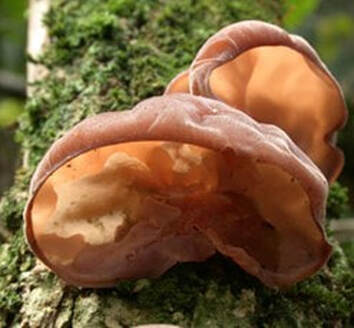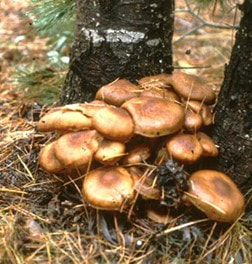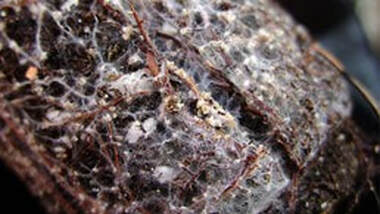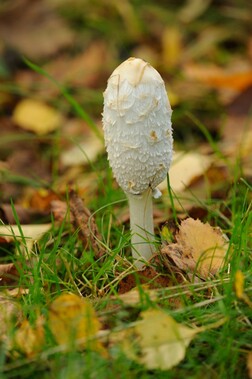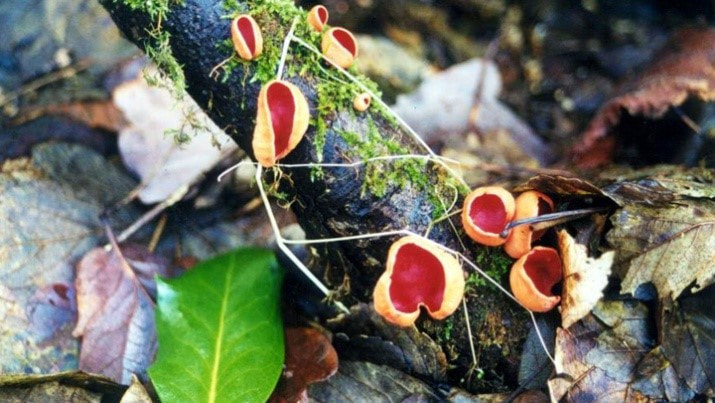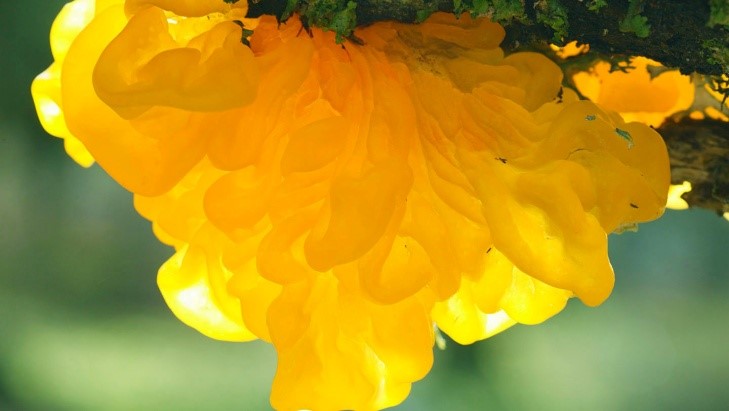Fungi – Weird wonders of nature by Amanda Hopwood
From the familiar mushroom to the alien shapes of Jelly ear, Candle snuff fungus and the Giant puffball, and the bright colours of Lemon Disco and Scarlet waxcap. There are so many to look for in our countryside. Fungi (plural) Fungus (singular) can be found in all sorts of locations and there are over 140,000 species that we know of world wide.
|
Some interesting facts about fungi
Fungi do not belong to either the plant or animal kingdoms. They are a kingdom in their own right with species which range from the largest living organism on earth currently thought to be a species of Honey fungus (Armillaria ostoyae) discovered in Oregon USA. and thought to cover 965 hectares (1,350 football fields). it's age is thought to be between 2400 and 8650 years old and weigh between 7000 and 30000 tonnes (Guiness World Records.com) to single celled yeasts, measuring only 3 thousandths of a millimetre, such as we use to make beer or bread.
|
Many live on dead organic matter of plant or animal origin, but some live on living tissue such as those causing fungal infections like 'Athletes foot' . Some of these infect living creatures gradually taking over their bodies and causing them to change their behaviour such as the tropical fungus (Ophiocordyceps unilateralis) that invades ants turning them into 'Zombie ants’ (www.nationalgeographic.com).
Fungi are known to digest rock to create soil and several have even been found that can digest plastic. (www.fungal-futures.com.). It is now thought that most plant species have a relationship with fungi that helps them to absorb more nutrients from the soil and to grow better. Slime moulds however were previously thought to be fungi, but it has now been shown not to be the case.
Fungi are known to digest rock to create soil and several have even been found that can digest plastic. (www.fungal-futures.com.). It is now thought that most plant species have a relationship with fungi that helps them to absorb more nutrients from the soil and to grow better. Slime moulds however were previously thought to be fungi, but it has now been shown not to be the case.
Why should we be grateful to Fungi
Unfortunately many people think of diseases when they think of fungi. Gardeners worry about Tomato and Potato blight, Mildews and Black spot, and farmers about rust on cereal, or ringworm in their cattle. Humans are also susceptible to fungal infections. There is sadly also a very serious fungal disease that has been spread around the world by human activity that is responsible for the death of millions of amphibians (www.nationalgeographic.com)
But apart from the obvious taste of mushrooms cooked in butter (sorry to those who don't like mushrooms or are vegan), and their ability to turn sugar into alcohol, used in bread making and used to make 'Marmite' and 'Quorn', probably the most beneficial role of fungi are to decompose organic matter and release nutrients into the soil for plants to uptake. They do this by digesting organic matter and breaking it down into its component parts.
But apart from the obvious taste of mushrooms cooked in butter (sorry to those who don't like mushrooms or are vegan), and their ability to turn sugar into alcohol, used in bread making and used to make 'Marmite' and 'Quorn', probably the most beneficial role of fungi are to decompose organic matter and release nutrients into the soil for plants to uptake. They do this by digesting organic matter and breaking it down into its component parts.
|
This is a major reason why some methods of gardening and agriculture are now suggesting that it is much better not to dig land as turning the soil can damage this association.
Of course in the UK, most of us have had antibiotics at some time in our lives, many of which were first made from moulds which are a type of fungus.
Before we had matches and lighters to start fires, ancient people would carry smouldering bracket fungi embers wrapped in moss and bark, so that they could easily start a fire at their next camp.
Of course in the UK, most of us have had antibiotics at some time in our lives, many of which were first made from moulds which are a type of fungus.
Before we had matches and lighters to start fires, ancient people would carry smouldering bracket fungi embers wrapped in moss and bark, so that they could easily start a fire at their next camp.
Where to see fungi
If you dig over a compost heap, often you will often see a white dusting on the rotting vegetation. This is fungal mycelium. You may also see black threads that look like bootlaces in dying tree trunks. These are the threads (Rhizomorphs) of Honey fungus and are responsible for the death of the plant. Moving a few bits of old timber laying in a damp corner will often reveal intricate white branching structures of mycelium working their way between the pieces of wood.
Spotting Fungi
But for many of us, looking for the fruiting bodies of mushrooms and toadstools and learning to identify them is the main interest. From late summer until early winter they appear in gardens, on trees and in hedges, in pastures and in woodlands. Of course whilst some are harmless, many are poisonous. The more deadly have names such a 'Death cap', 'Destroying Angel' and 'The Sickener'.
The following are some common species that you may see:
The following are some common species that you may see:
